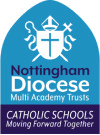In Branch 1, pupils learn about Moses and his special encounter with God. They explore the story of Moses, focusing on key events such as the Burning Bush and the giving of the Ten Commandments. Pupils examine how these commandments connect to the teachings of Jesus and discuss the concept of covenants—promises that God makes with figures like Noah, Abraham, and Moses.
The branch also highlights how the Ten Commandments guide people to live well. Pupils develop an understanding of sin and reflect on virtues, which are good habits that help individuals lead positive and meaningful lives. Through these teachings, they see how God’s commandments encourage good choices and kind treatment of others.
By engaging with these lessons, pupils discover why the commandments remain relevant today. They consider how these values help individuals grow and contribute to a stronger, more compassionate community.





